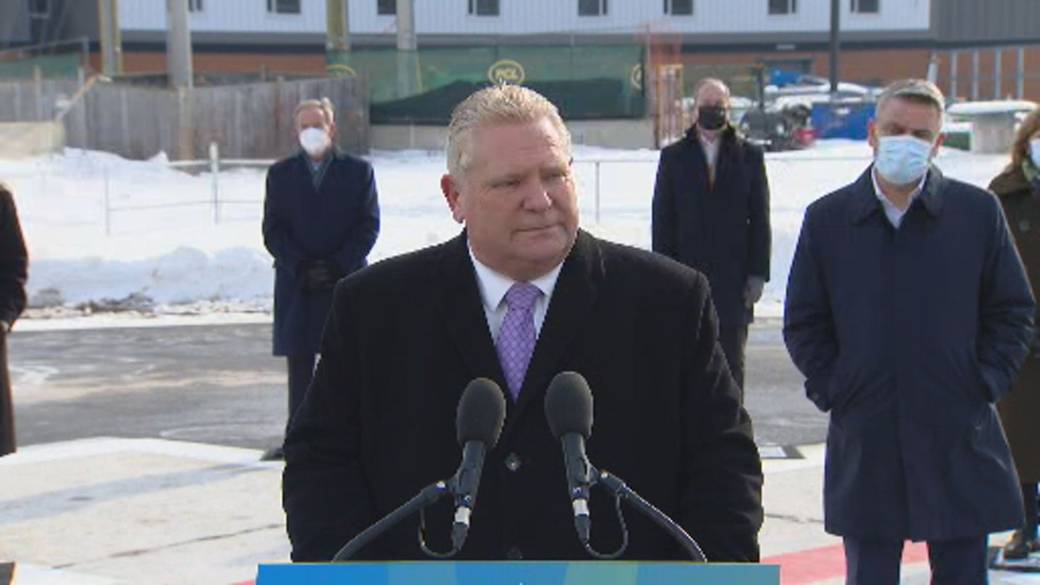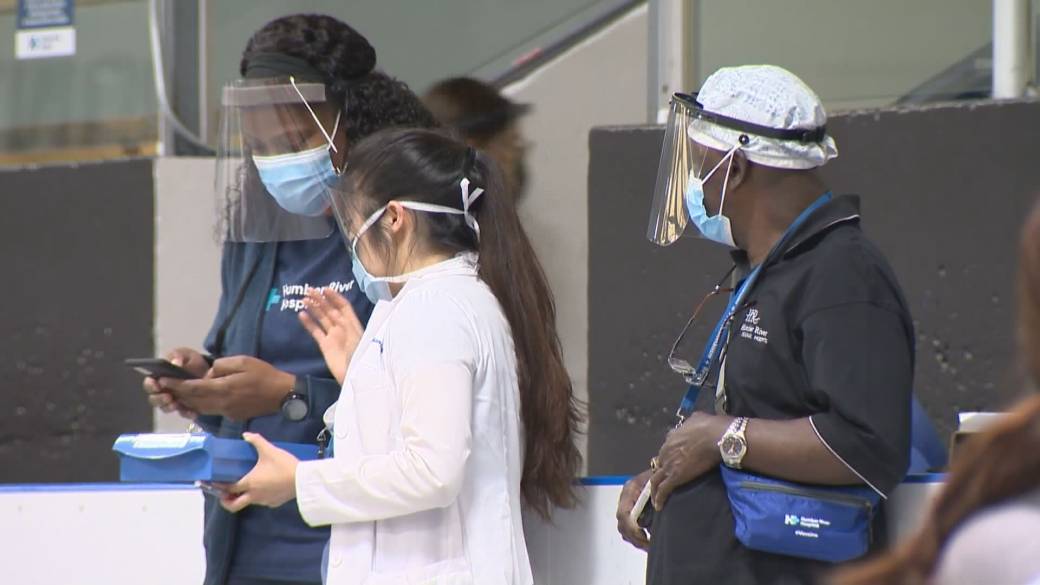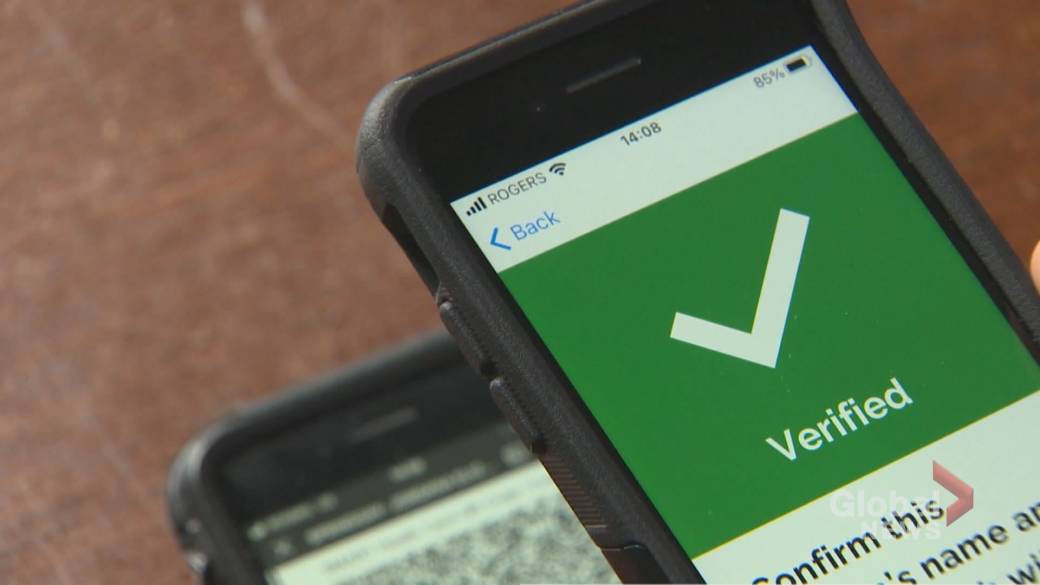TORONTO – Ontario’s official COVID-19 testing volumes have plummeted since PCR access was sharply restricted in the face of an Omicron surge, but rather than widely re-expanding eligibility in the future, the province appears to be forging a new pandemic testing path.
Demand for tests at the end of last year saw a high of more than 75,000 processed the day the government announced eligibility would be limited largely to high-risk individuals – including patients in hospital, residents and staff in long-term care, and people being considered for COVID-19 treatments.
There have been calls to allow more residents to access gold-standard PCR tests, including students and staff in schools and child-care settings, now that an average of 25,460 tests have been processed each day over the past week, including a low of 15,008 one day on the weekend.
Read more:
2,939 people in Ontario hospitals with COVID, 555 in intensive care
Instead, the government is sending millions of rapid antigen tests to schools and recent comments from the chief medical officer of health suggest shifting testing priorities, with a declining emphasis provincewide on PCR tests.
When asked about returning to a broader PCR eligibility, Dr. Kieran Moore said the criteria are regularly reviewed, but going forward, the province will take a “balanced approach” between PCR and rapid tests.
“(PCR is) clearly the more labor-intensive and the more difficult to get,” he said two weeks ago.
“You have to go to an assessment center, you have to wait to get the swab done for PCR testing. We’re limiting it specifically to those high-risk populations and settings. And I hope the public, as we have more RATs generally available, will take advantage of them because I do believe they are much more convenient, done in the calm of your home, and you have an answer within minutes instead of waiting several days for the PCR results. ”
Read more:
Ontario long-term care visitor restrictions under review, new minister says
A spokeswoman for Health Minister Christine Elliott said Wednesday that Ontario may expand PCR testing to additional groups if there is capacity, and is actively looking at how to expand the use of rapid tests.
But using more rapid tests partly depends on supply from the federal government, and Ontario said that of the 54.3 million tests Ottawa promised to deliver to the province in January, only 17.6 million were received.
Public health and infectious disease experts say prioritizing PCR tests for people at high risk for severe disease makes sense, but there are drawbacks to an increasing reliance on rapid tests.
Dr. Andrew Morris, an infectious diseases physician, said rapid tests will end up being helpful for an average person’s day-to-day functioning, but they are not a great tool for pandemic surveillance and management.

Rapid antigen tests are proving to be less accurate than PCR tests in detecting Omicron, at least early in an infection, he said, and there is so far no way in Ontario to track positive results.
“Right now, we really do not have a great idea of where we are in this current wave,” Morris said.
Quebec has developed a portal for self-reporting rapid test results, and Morris and other experts say Ontario should consider something similar.
Provincial officials have said they support the efforts of some public health units asking residents to report their rapid test results, but have no plans to implement that for Ontario, as the uptake in other jurisdictions such as the UK is too low to give a reliable picture. .
Dr. Fahad Razak, an internist and member of the province’s science advisory table, agreed that it would be ideal to have a way to track rapid test results – as well as ensuring they are accurate – if Ontario will be relying on them more.

“Having people just flooded into testing centers to get PCR testing, it’s probably not sustainable over the long term,” he said.
“I understand that desire to push from PCR towards rapid testing, I’d just like to see some of these other areas developed along with it.”
PCR testing should be focused on the highest-risk groups, Razak said, which is largely Ontario’s current strategy. Priority should be given to groups that could most benefit from a confirmed COVID-19 test so they can access treatments meant to keep high-risk people from becoming hospitalized, he said.
With the recent arrival of the new antiviral drug Paxlovid, Ontario clarified that people who are eligible for treatment – and can therefore get a PCR test at an assessment center in order to qualify – include immunocompromised adults and unvaccinated people over 60. The drug has been shown to dramatically reduce risk of hospitalization if taken early in the illness.

Dr. Sumon Chakrabarti, an infectious diseases physician, said the vast majority of people who get COVID-19 do not need to be tested and it does not make sense to return to the wide-open eligibility of 2021.
“People are having a hard time with that, I think, because for two years, we’ve been testing,” he said.
“But what we need to understand is, if you look at the world in 2018, if you got influenza, or if you got a sore throat and you’re coughing, you did not know what it was. You just knew it was viral, for the most part. You were not testing everybody in the community. But we did test people in the hospital. And that’s where it matters. ”
In the absence of better tracking and accuracy of rapid tests, other metrics can help monitor the spread of COVID-19, including hospital and ICU admissions, COVID-19 levels in wastewater, the percentage of positive tests at workplaces doing screening and in hospitals, as well as surveillance that looks at antibodies in random samples of blood tests, Razak said.
“Each of these is not the same as PCR,” Razak said. “But by putting them all together, you can start to get a picture of what’s happening even in the absence of PCR.”
© 2022 The Canadian Press
Reference-globalnews.ca

